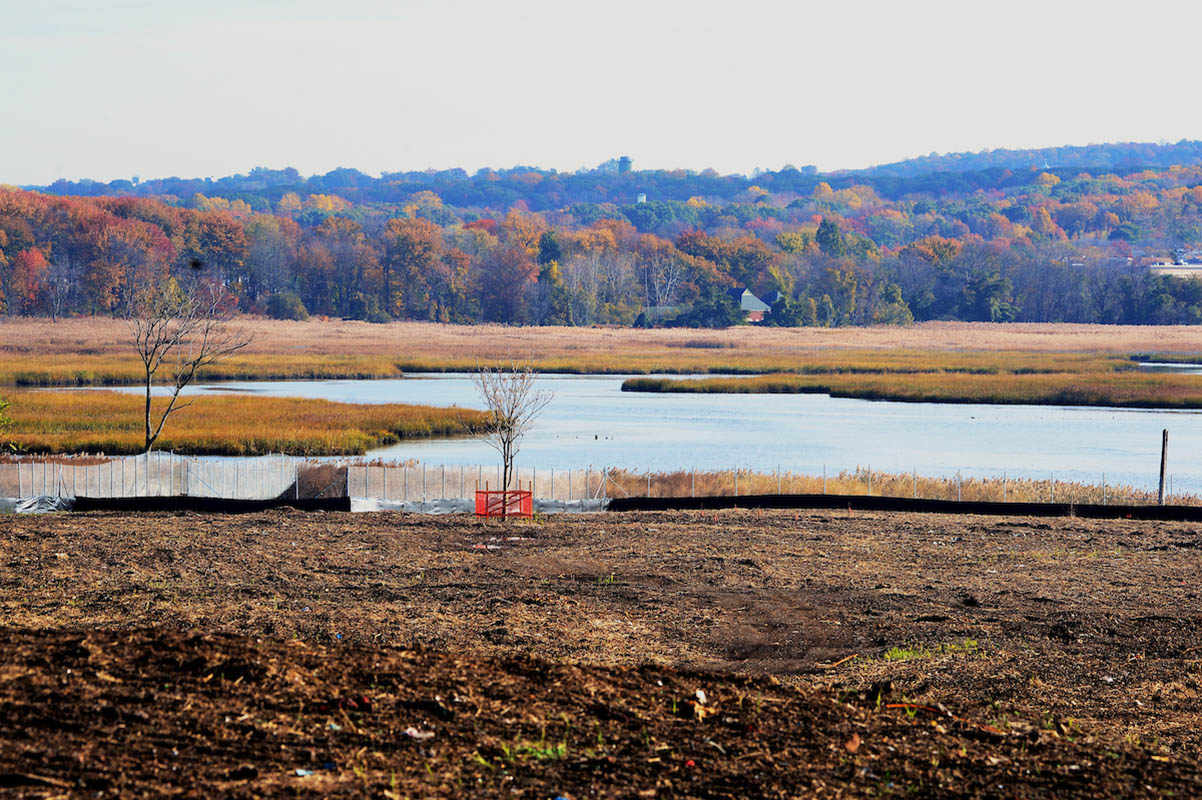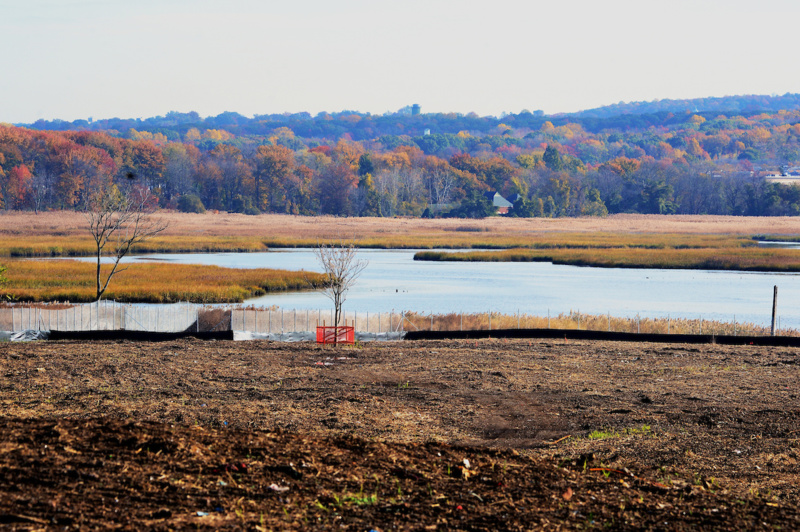 Image courtesy NYC Parks
Image courtesy NYC Parks
Yesterday was the groundbreaking of North Park at Freshkills Park on Staten Island, the first section inside the boundaries of the original Fresh Kills Landfill that will be open to the public. The massive undertaking to convert the landfill, the largest in the world when it closed in 2001, will be a decades long process. In fact, planning has been ongoing since 1999, with the first parts of the future 2,200 acre park opened a few years ago, with an anticipated completion date of 2036. North Park will be a 21-acre section, expected to open in 2020.
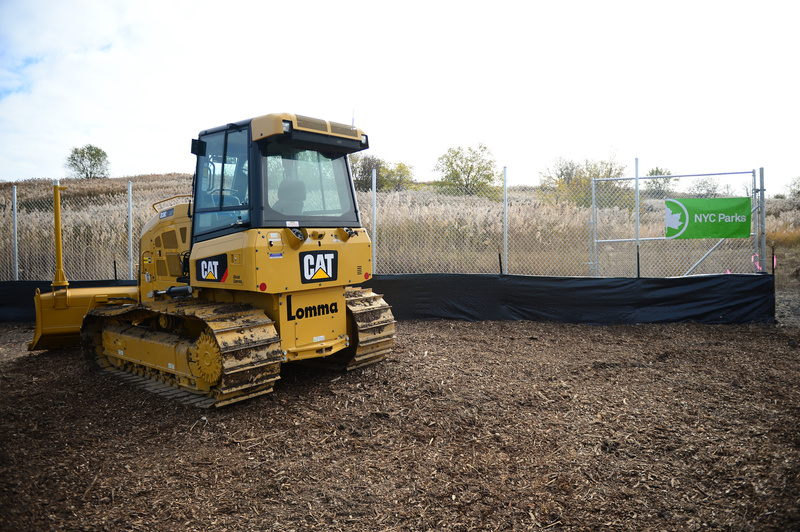 Image courtesy NYC Parks
Image courtesy NYC Parks
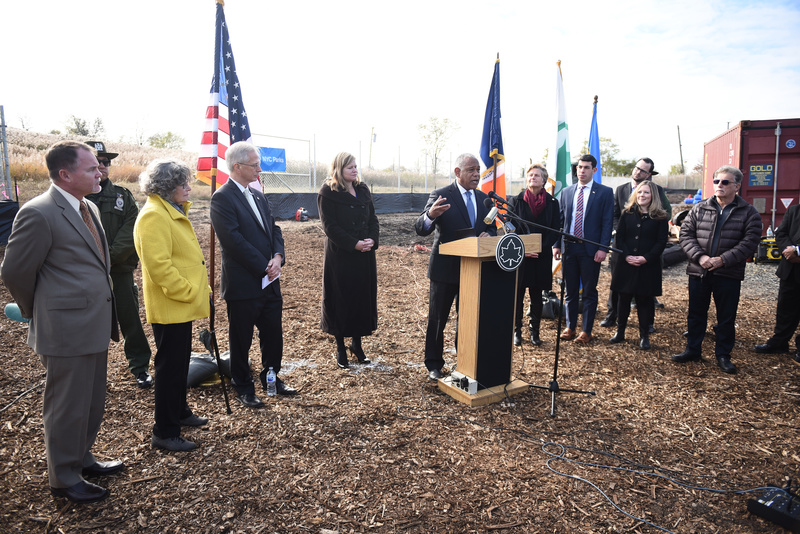 Groundbreaking ceremony. Image courtesy NYC Parks
Groundbreaking ceremony. Image courtesy NYC Parks
A visit to Fresh Kills Landfill with the NYC Parks Department was one of Untapped Cities’ first articles, ever, and we are excited to have been following the progress of this park since then – with the groundbreaking of Schmul Park just adjacent in 2010 and tracking the progress on the park’s annual “Sneak Peek” days. To put the size of the future Freshkills Park in perspective, it will be the city’s second largest park (after Pelham Bay Park) nearly three times the size of Central Park and will be the largest park constructed in New York City in over a century.
Attending the groundbreaking yesterday was NYC Parks Commissioner Mitchell J. Silver, Sanitation Commissioner Kathryn Garcia, Staten Island Deputy Borough President Ed Burke and Assembly Member Michael Cusick. North Park comes at a price tag of $29.7 million and will include a multi-use pathway, numerous smaller pathways, a seven-acre seed farm, a forested plateau, a composting comfort station (akin to the one at Prospect Park), picnic lawn, waterfront overlook deck and a bird observation tower (see renderings below).
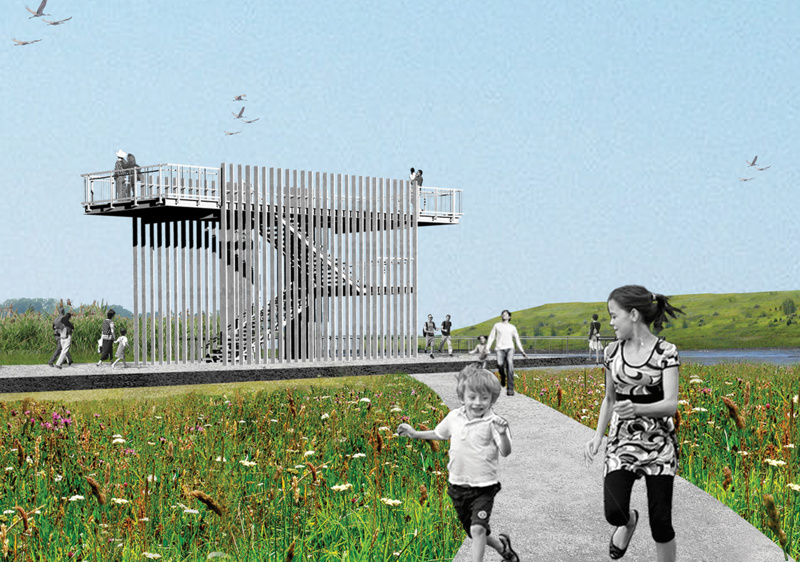 Bird Tower. Image courtesy NYC Parks
Bird Tower. Image courtesy NYC Parks
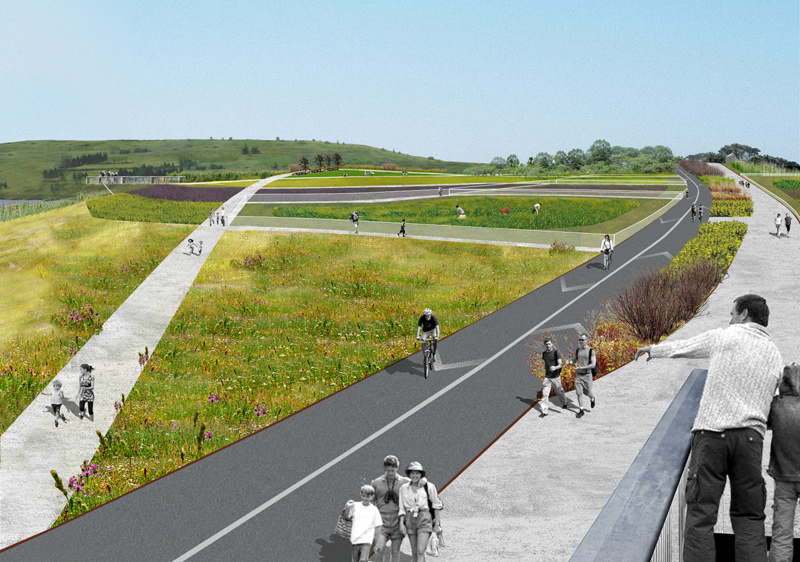 Image courtesy NYC Parks
Image courtesy NYC Parks
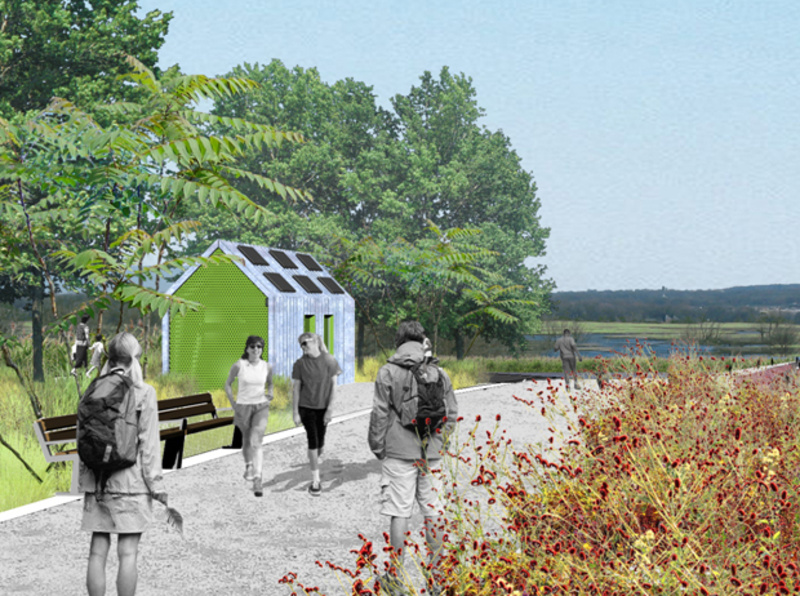 Comfort station. Image courtesy NYC Parks
Comfort station. Image courtesy NYC Parks
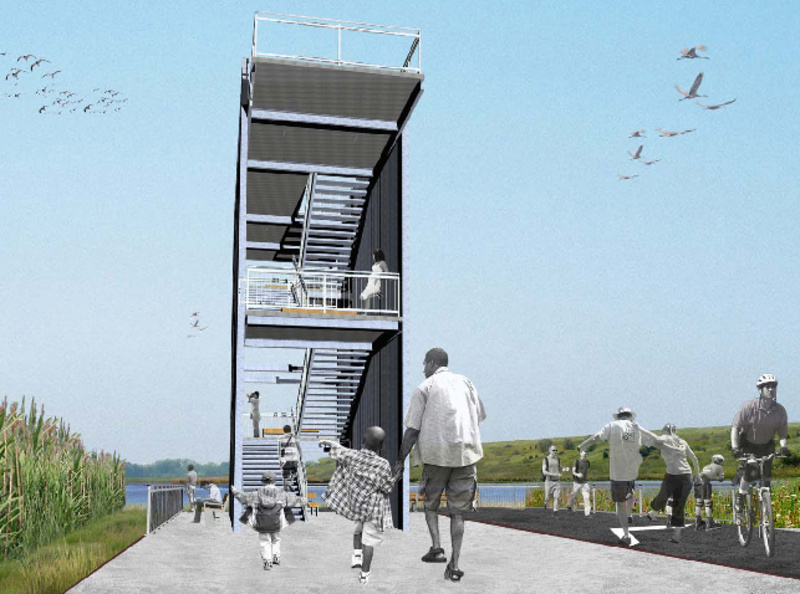 Image courtesy NYC Parks
Image courtesy NYC Parks
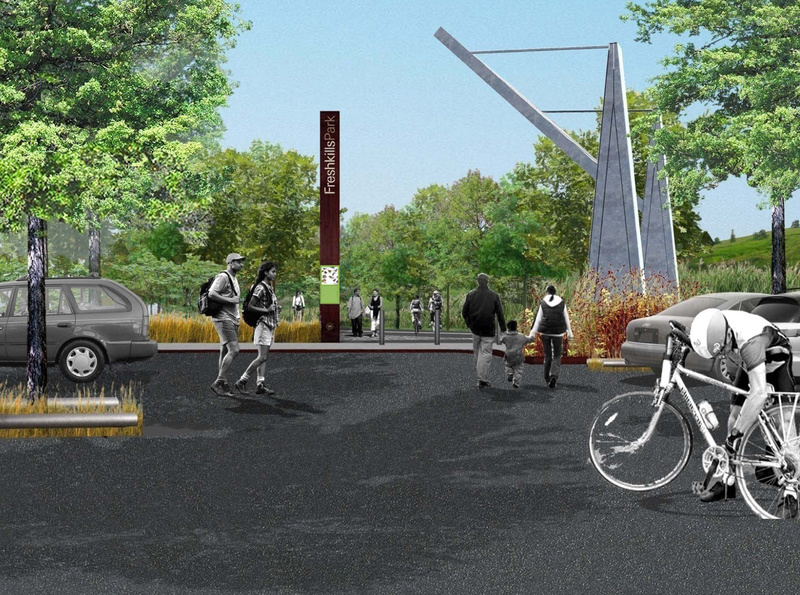 Entry into the park. Image courtesy NYC Parks
Entry into the park. Image courtesy NYC Parks
This section of the park contains some of the innovative environmental solutions that were already touted on our first visit, including a cap and cover system that separates the landfill from the park. According to the Parks department:
The final cover…prevents water from coming into contact with garbage to create leachate, prevents landfill gas—the result of decomposing waste–from building up to explosive pressures, and promotes stabilizing and aesthetically pleasing vegetation. Other closure components included stormwater management and erosion controls; landfill gas collection, emissions and migration controls (to protect air quality, prevent odors and protect neighboring communities); and a leachate containment and collection system (to protect the groundwater).
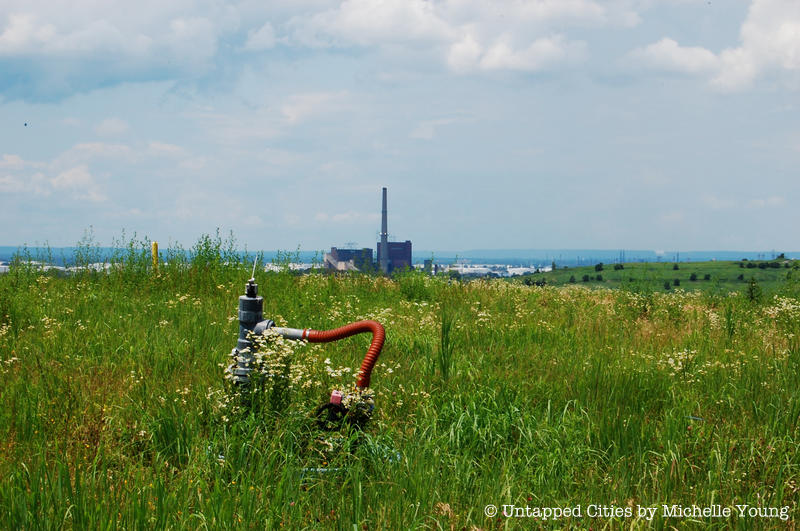 Inside the future Freshkills Park boundary
Inside the future Freshkills Park boundary
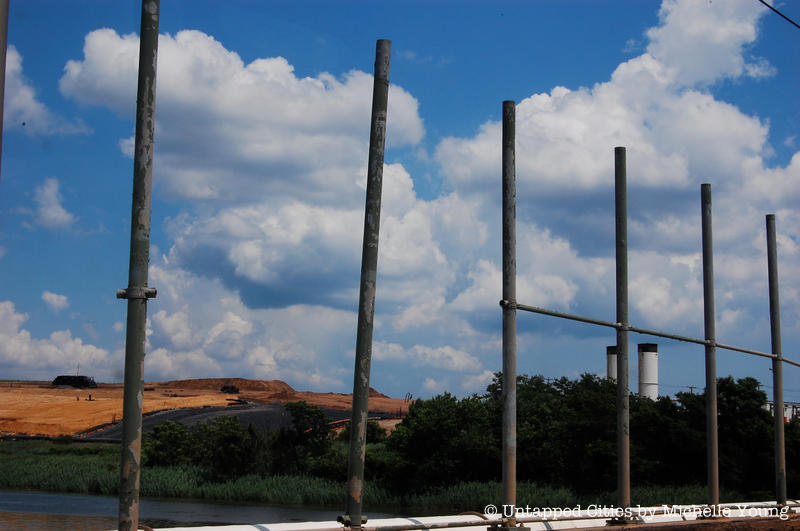
Phase one of North Park is funded by the NYC Mayor’s Office as well as a $1.2 million award from the New York State Department of State Local Waterfront Revitalization Program.
At the event, Department of Sanitation Commissioner Kathryn Garcia highlighted the innovative undertaking: “The enormous transformation of this incredible property from a massive solid waste site to a vast urban park demonstrates exactly what can be done by an imaginative government to restore land to a viable and sustainable usage.” City Council Member Steven Matteo emphasized the symbolic importance of the landfill transformation for the residents of Staten Island: “For decades, the people of Staten Island were burdened with the world’s largest landfill, until it was finally closed in 2001. Today’s groundbreaking of North Park is not only important symbolically, it marks a significant and real step forward in transforming what once was an environmental atrocity into an economic, social and environmental asset to the borough and the city.”
Next, see photos of our boat tour of Freshkills Park and check out our previous coverage.






